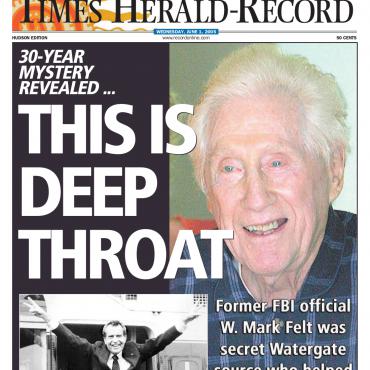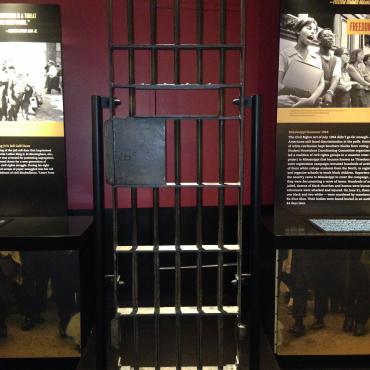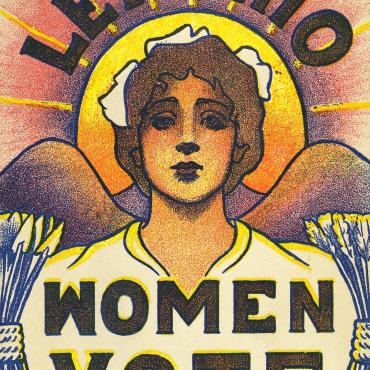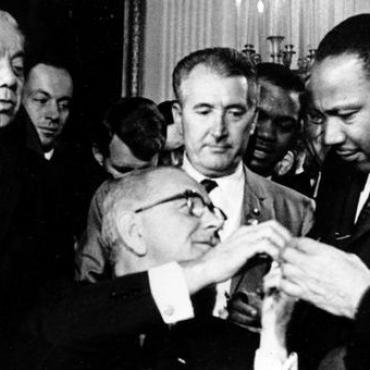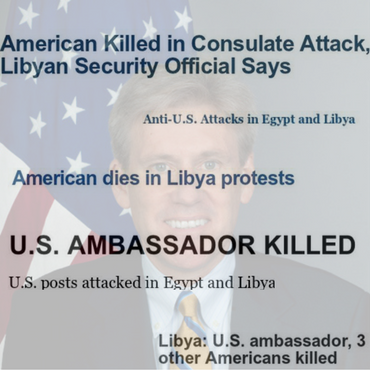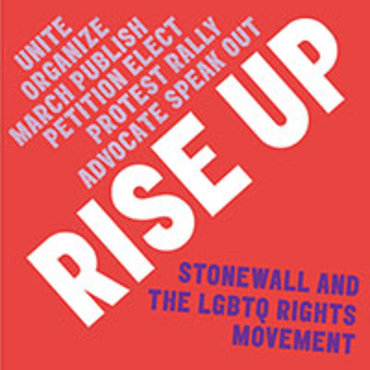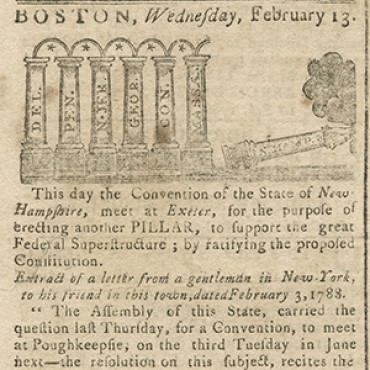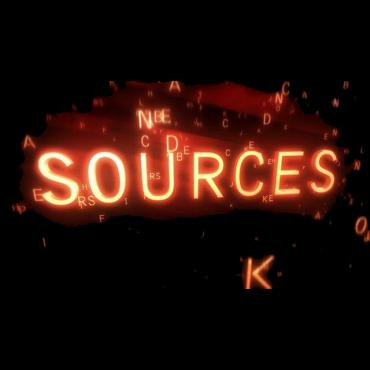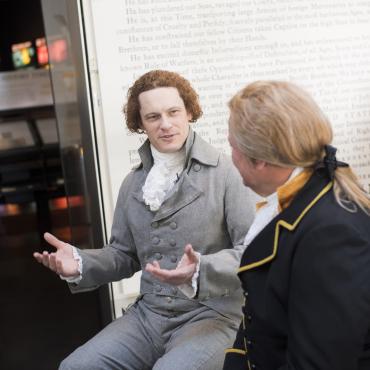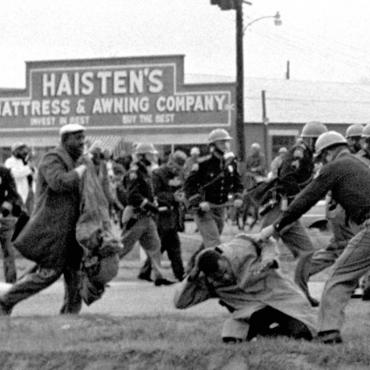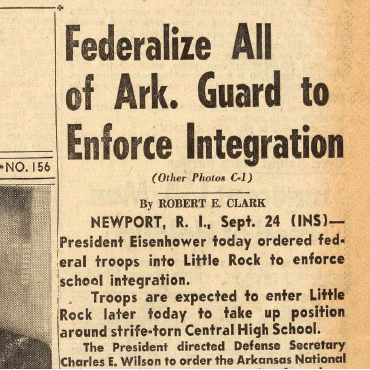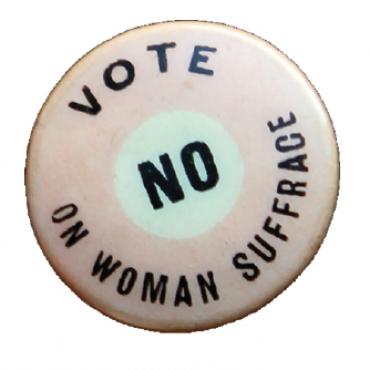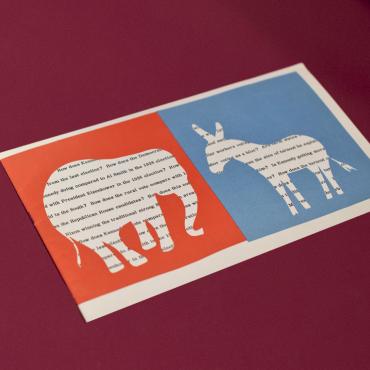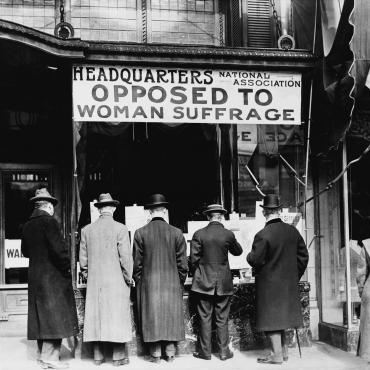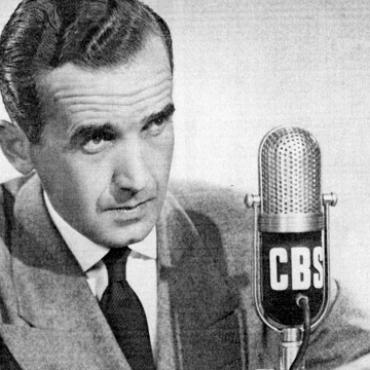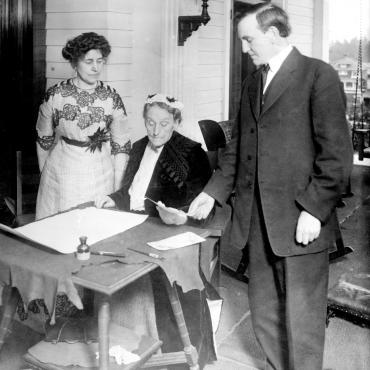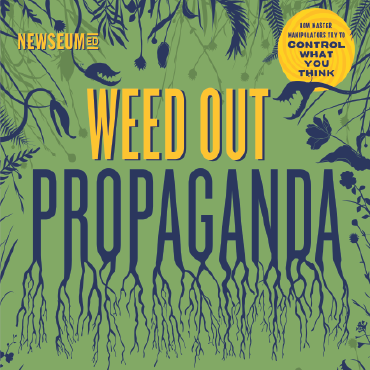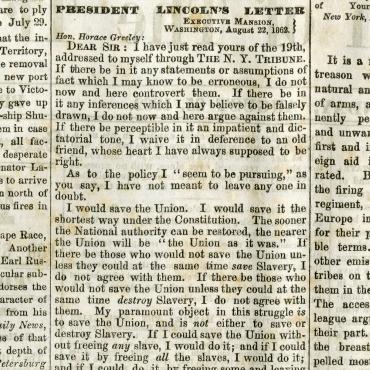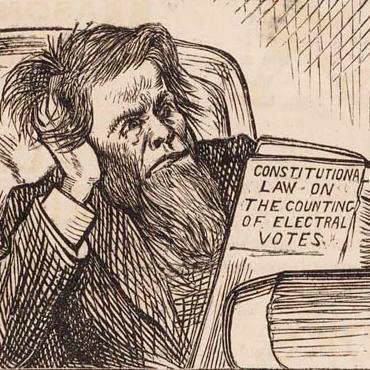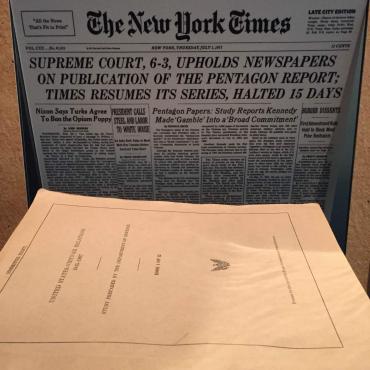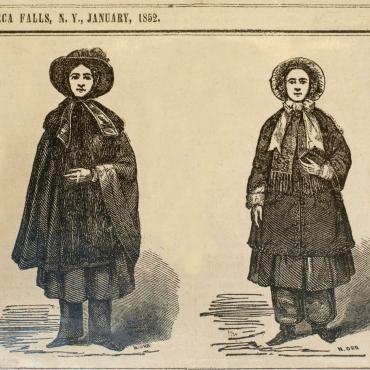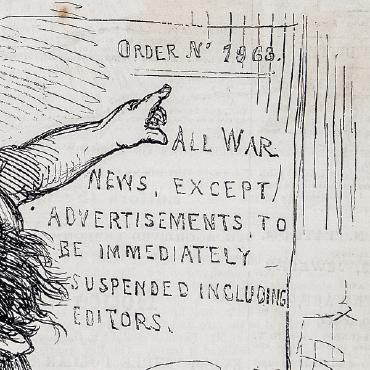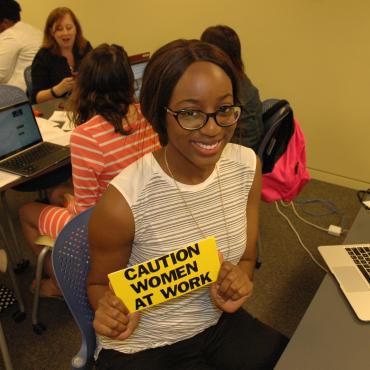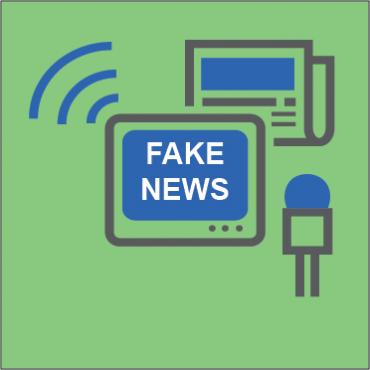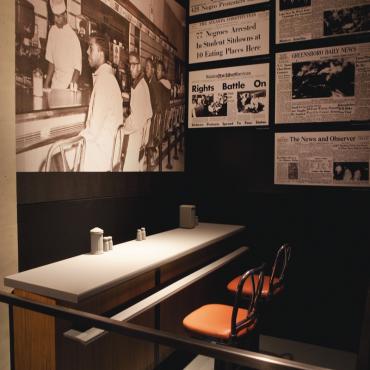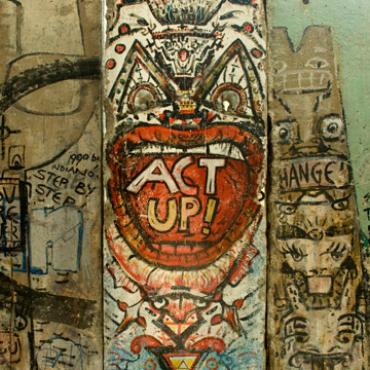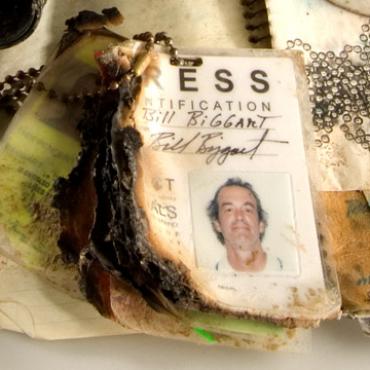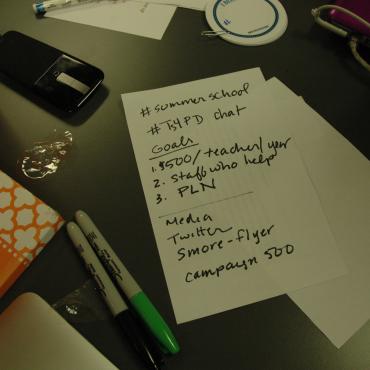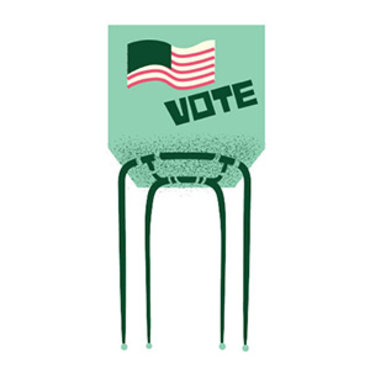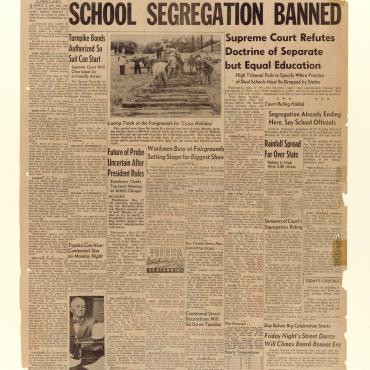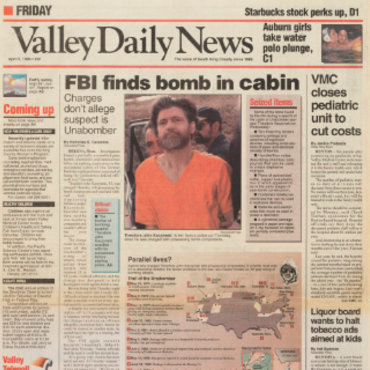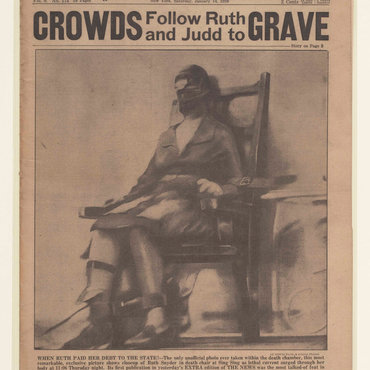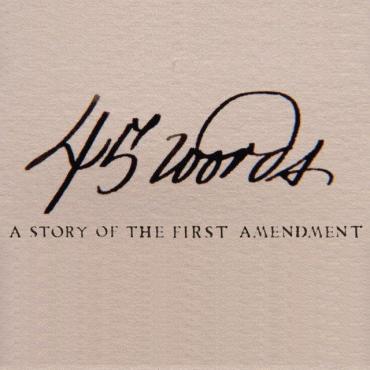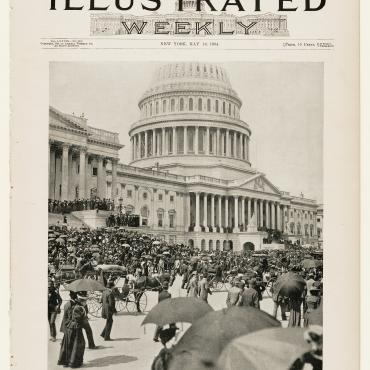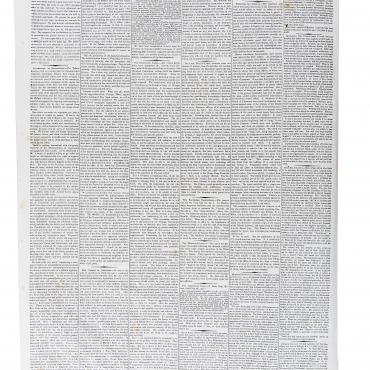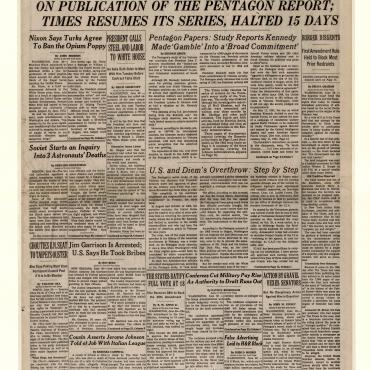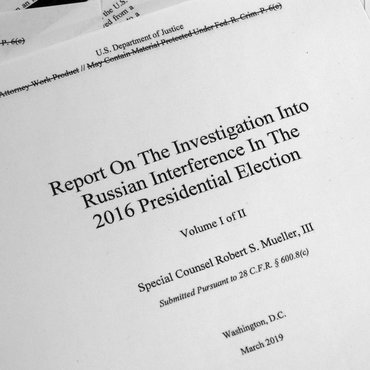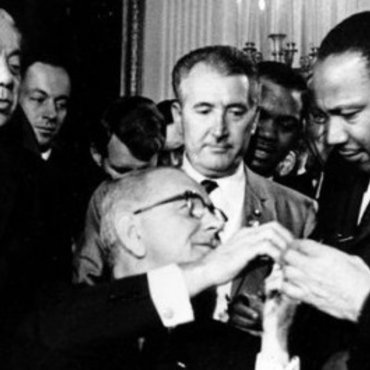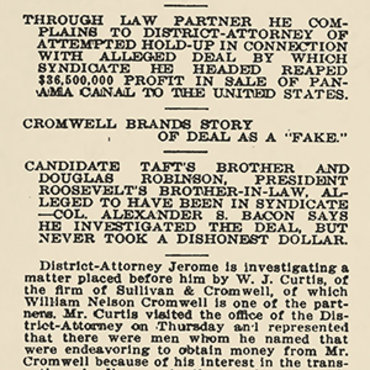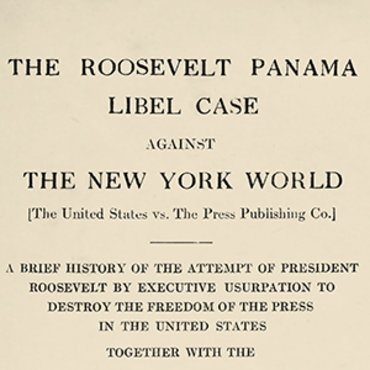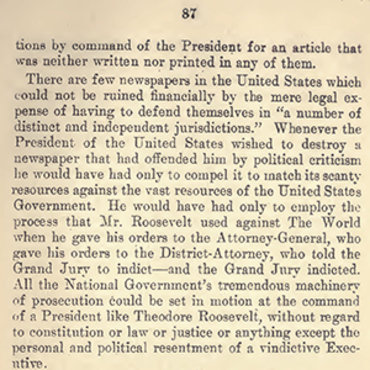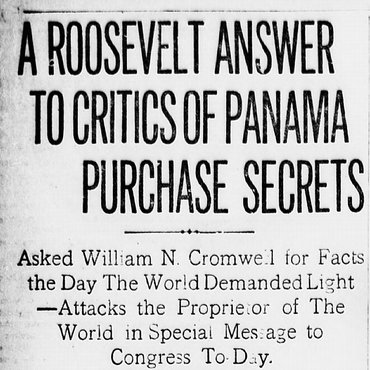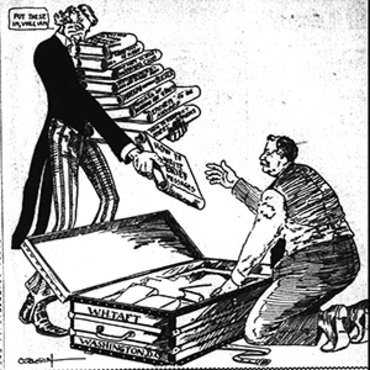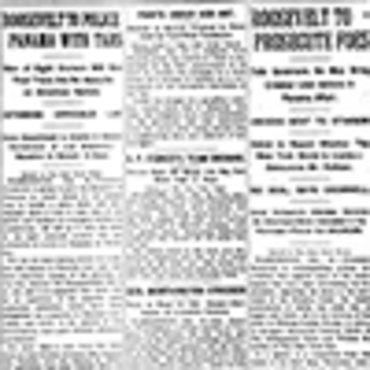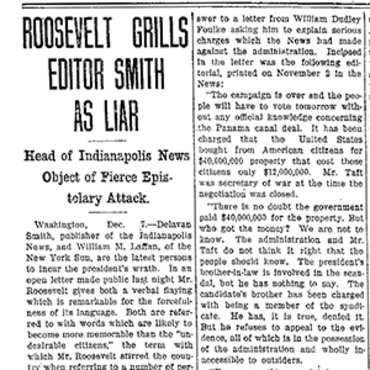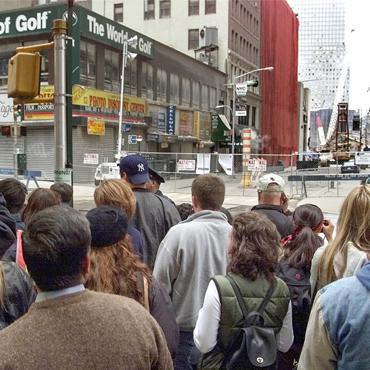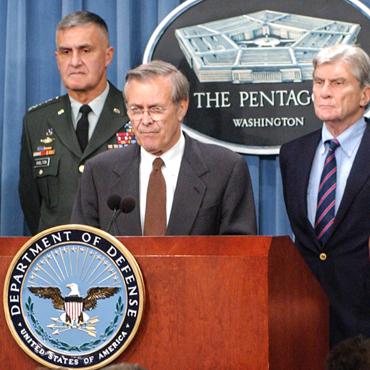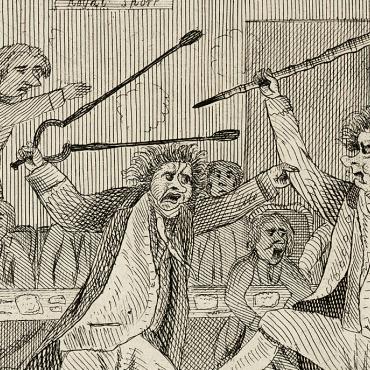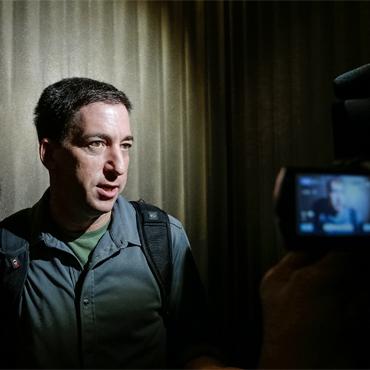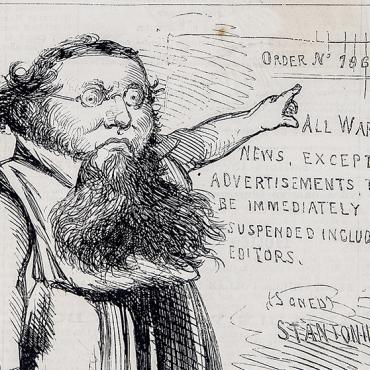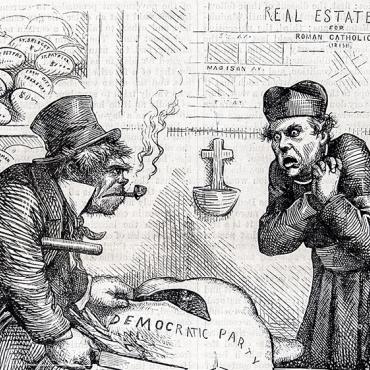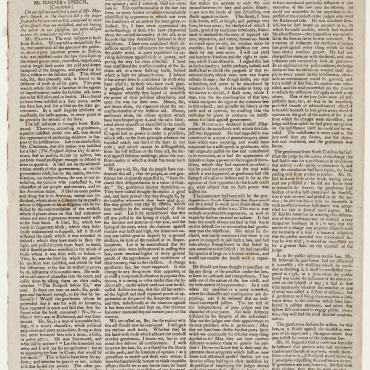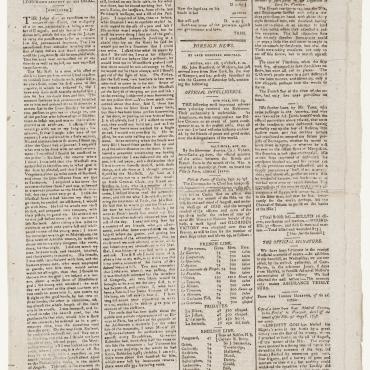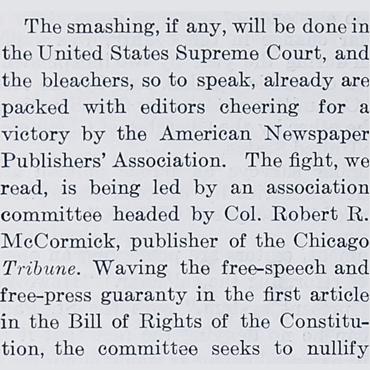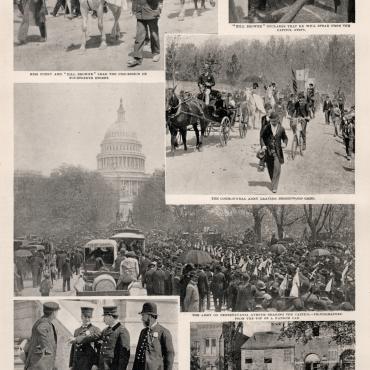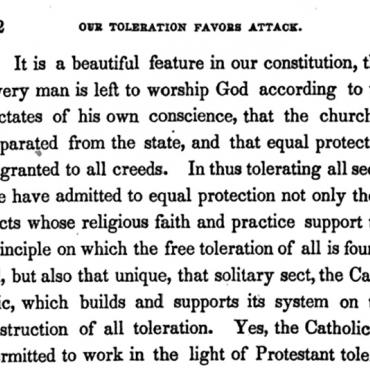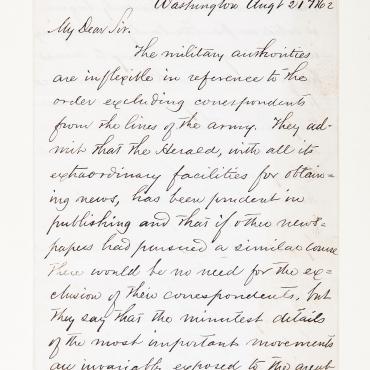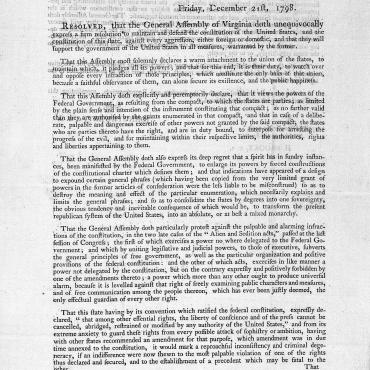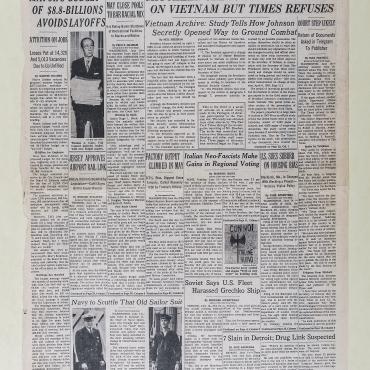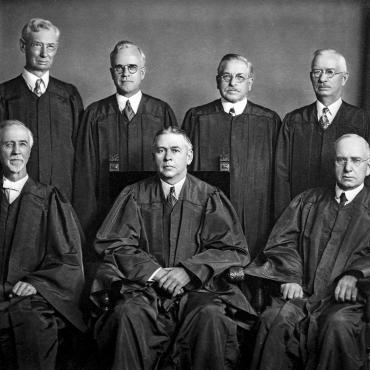‘45 Words' Video Lesson
Actor Martin Sheen narrates this story of the political struggles involved in establishing the First Amendment and early challenges to it.
Get even more great free content!
This content contains copyrighted material that requires a free NewseumED account.
Registration is fast, easy, and comes with 100% free access to our vast collection of videos, artifacts, interactive content, and more.
NewseumED is provided as a free educational resource and contains copyrighted material. Registration is required for full access. Signing up is simple and free.
With a free NewseumED account, you can:
- Watch timely and informative videos
- Access expertly crafted lesson plans
- Download an array of classroom resources
- and much more!
- Constitution
- Journalism
- National Security
- Politics
- 9-12
- College/University
This video features interviews with modern-day journalists and scholars and with actors dressed as historical figures. All of the actors’ words are direct quotations taken from primary sources (letters, books and newspapers) from the era depicted in the video.
- Tell students that they will learn the origins of freedom of the press in America. Check for background knowledge by asking:
- What do you know about the Bill of Rights and the First Amendment?
- Should we be allowed to criticize our government? Why or why not?
- What is the role of the press in political affairs?
- Remind students of the rationale behind the Federalist and Antifederalist positions.
- Democratic-Republican publishers, concerned that the Federalists’ push for a strong centralized government would jeopardize individual liberties, lobbed insults at George Washington, John Adams and anyone else they saw as betraying the ideals of the Revolution.
- The Federalists, bracing for a possible war with France and fearful that such sharp criticism could destabilize the young nation, passed the Sedition Act, banning any speech or publication intended to undermine the government. Publishers across the republic went to jail and paid steep fines, and public disapproval of the law grew until the Federalists lost power in 1800, when Democratic-Republican Thomas Jefferson won the presidency.
- Explain that as they watch the video, students will see how the First Amendment survived its first significant challenge and how it continues to play a role in our lives today. Hand out copies of the viewing guide. Students should review the questions before you start the video and then take notes as they watch it.
- Watch the video.
- The after-you-watch comprehensive questions can be done in class or for homework.
- “45 Words” Video Lesson worksheet (download), one per student
- “45 Words” reference materials (download, optional)
- Internet access to watch “45 Words”
Ask your students to reflect on the tension between freedom of press and national security and unity. Discuss or assign one or more of these questions as short essays for homework:
- Does sedition exist today? If yes, what does it look/sound like? If not, why not?
- What should be the role of opinion in journalism? Is it ever OK for journalism to express biased opinions about politics or other issues? Where do we generally see opinionated or advocacy journalism today?
- In the video, law professor R.B. Bernstein describes the political tensions in early America, saying, “The question is: Can we fight these things out and still remain united? We’re used to the idea. They’re not. They’re scared.” Are fights a necessary part of the political process? How should we handle dissenting opinions so that all voices are heard but debates do not tear the country apart?
- The video quotes Thomas Jefferson saying, “If it were left up to me to decide whether we should have a government without newspapers or newspapers without a government, I shouldn’t hesitate for a moment to choose newspapers.” Why would Jefferson choose newspapers over government? Would you make the same choice? Why or why not? How would our country be different if there were no news media?
- How far should freedom of press extend? Where should we draw the line between protected criticism of the government and ideas that could cause harm to the country or its citizens?
- Concerns about sedition often arise at times of war or political unrest. Why do you think this is the case? Are there any circumstances under which we should place more limits on freedom of the press? When and why?
- In the video, journalist and author Eric Burns says, “Civility just did not seem to have a place in the [early American] press. Too much at stake. In addition, the press was as vile as it was back in those days because there was no tradition of fairness.” What does Burns mean when he says there was “too much at stake” for the early American press? Compare and contrast the role and workings of today’s press to the early American press. Does today’s press follow the “tradition of fairness” Burns describes?
- Benjamin Franklin wrote, “Those who desire to give up freedom in order to gain security will not have, nor do they deserve, either one.” What does Franklin mean? Do you agree with this statement? Why or why not?
- Find the full text of the Alien and Sedition Acts of 1798 (available here:http://avalon.law.yale.edu/subject_menus/alsedact.asp). Make a chart that compares and contrasts: the reasons leading to the passage of each law, the specific acts each law outlawed, the punishments described, and each law’s effects.
- At the time depicted in the video, newspapers were the main medium for publishing news. Today, a much greater variety of communication tools is available. Choose a quotation that interests you from one of the historical figures in the video. (You may need to watch it again to find your quotation.) Determine what this quotation means, then translate the main idea into modern language and communicate it using a variety of modern media: a Twitter posting, a Facebook status update, a YouTube video, a blog post, a text message, etc. Choose at least three forms of modern media.
- What limits do we put on First Amendment freedoms? What limits should we put on First Amendment freedoms? Visit the First Amendment Center’s website (http://www.firstamendmentcenter.org/) and select one First Amendment freedom. Read the overview of the freedom and make a chart that lists how you can use the freedom and how you cannot use the freedom. Then write a paragraph describing what you think the limits on this freedom should be. What should be allowed? What should not be allowed? Why?
- Benjamin Franklin Bache and Matthew Lyon were not the only individuals tried under the 1798 Sedition Act. Write a short report about one of the following individuals and their involvement with sedition: James Thomson Callender, Samuel Chase, Thomas Cooper or William Patterson.
- Choose a historical figure from the “Need to Know” list of key people. Research this person and write a more extended biography, focusing on his or her connections to the First Amendment, the press and the Sedition Act.
- Create a timeline of sedition cases throughout American history. On your timeline, also include major historical events to provide context for the court cases.
- Collect three recent newspaper editorials or opinion articles that take a critical stance against something the government is doing. (You can find these in the editorial and op-ed pages of a printed newspaper or on the “Opinion” page of an online newspaper site.) For each editorial or opinion article, make a chart. At the top, summarize the argument the piece is making. Underneath, list the facts cited and opinions expressed. At the bottom, explain whether you agree or disagree with the position taken and why.
- While prosecution of the press for sedition has become rare, libel cases remain common in today’s court system. Research what libel is. (Start with this overview:http://www.splc.org/knowyourrights/legalresearch.asp?id=27.) Prepare a presentation to explain to your classmates what libel is, including the “PIHF checklist” and the four defenses against libel. Also explain the similarities and differences between libel and sedition.
-
Common Core State Standards: CCSS.ELA-LITERACY.CCRA.SL.2
Integrate and evaluate information presented in diverse media and formats, including visually, quantitatively, and orally.
-
National Center for History in the Schools: NCHS.Historical Thinking.3
A. Compare and contrast differing sets of ideas. B. Consider multiple perspectives. C. Analyze cause-and-effect relationships and multiple causation, including the importance of the individual, the influence of ideas. D. Draw comparisons across eras and regions in order to define enduring issues. E. Distinguish between unsupported expressions of opinion and informed hypotheses grounded in historical evidence. F. Compare competing historical narratives. G. Challenge arguments of historical inevitability. H. Hold interpretations of history as tentative. I. Evaluate major debates among historians. J. Hypothesize the influence of the past. -
National Center for History in the Schools: NCHS.US History.Era 3
Standard 1: The causes of the American Revolution, the ideas and interests involved in forging the revolutionary movement, and the reasons for the American victory Standard 2: The impact of the American Revolution on politics, economy, and society Standard 3: The institutions and practices of government created during the Revolution and how they were revised between 1787 and 1815 to create the foundation of the American political system based on the U.S. Constitution and the Bill of Rights
-
Center for Civic Education: CCE.V
A. What is citizenship? B. What are the rights of citizens? C. What are the responsibilities of citizens? D. What civic dispositions or traits of private and public character are important to the preservation and improvement of American constitutional democracy? E. How can citizens take part in civic life?
